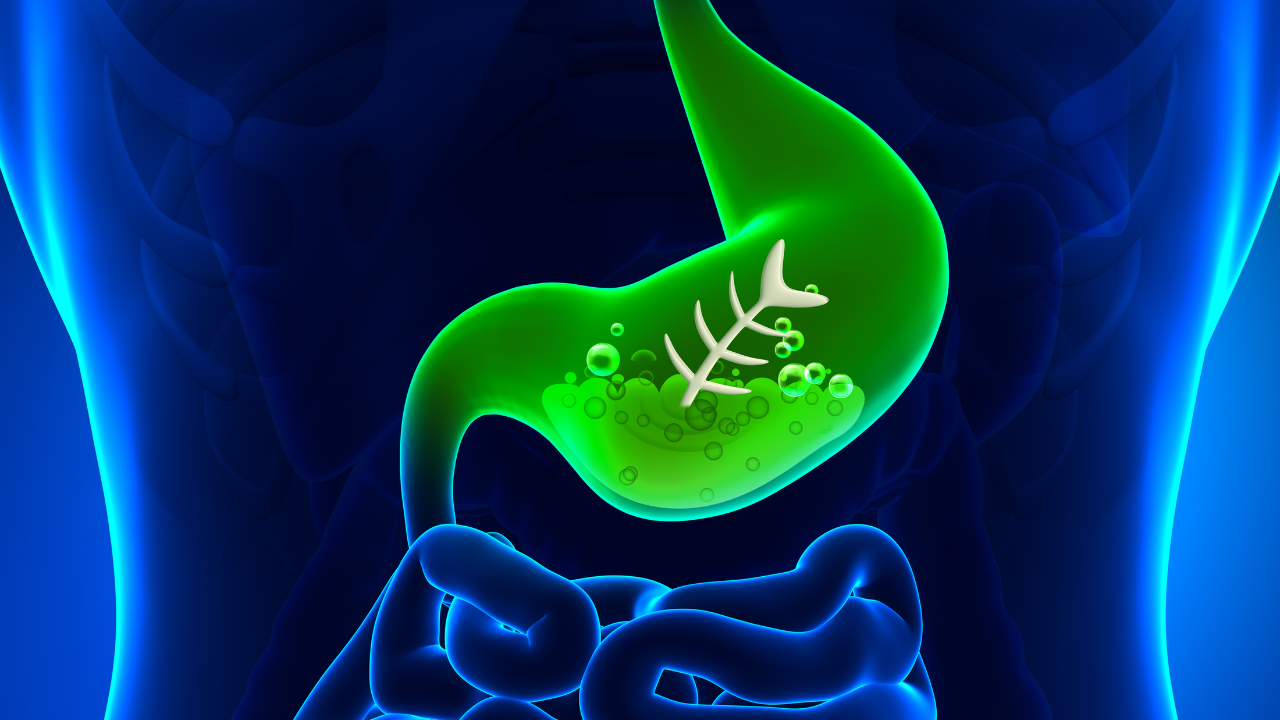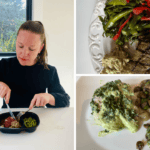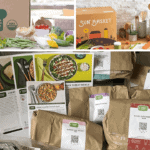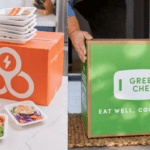I’ve been working in healthcare for years, and one thing I’ve noticed becoming increasingly common is patients struggling with nausea linked to GLP-1 medications. GLP-1 drugs, like Ozempic, have become so popular that they’re almost household names at this point, and they’re often used for managing type 2 diabetes and promoting weight loss. But despite their effectiveness, nausea and acid reflux are often unfortunate companions for many who are trying to take control of their health.
I’ve found a few practical methods to reduce GLP-1-related nausea and discomfort, especially when it’s tied closely to acid reflux. In my experience, dealing with nausea effectively can make or break someone’s ability to continue their treatment plan comfortably. Here’s what I’ve found works best.
Topic Contents
The Bottom Line, Up Front:
GLP-1 medications often cause nausea and acid reflux, but you don’t have to accept these symptoms. In my experience as a healthcare professional, effective strategies include dietary adjustments, elevating your sleeping position, proper hydration timing, and natural based products like Reflux Gourmet. Among these, Reflux Gourmet stands out because it provides longer-lasting, natural relief by forming a protective barrier against reflux, offering a practical solution for patients who want lasting comfort without medications.
Understanding GLP-1 Related Nausea
First, it’s important to grasp why GLP-1 medications trigger nausea in the first place. These medications slow gastric emptying, meaning your stomach stays fuller longer. This is great for reducing appetite and promoting weight loss, but it can lead to reflux and uncomfortable feelings of nausea.
I’ve seen countless patients frustrated, thinking they have to choose between feeling sick or quitting their medication. But the truth is, you don’t need to accept nausea as inevitable.
From experience, I’ve gathered several effective strategies to combat acid reflux and nausea, some traditional, some innovative, but all aimed at helping people feel better.

1. Dietary Adjustments: Simple Changes, Big Relief
One of the easiest methods I’ve advised patients to try first is adjusting their diet. It might sound basic and like a no-brainer, but these changes really do help. When your stomach empties slowly, certain foods exacerbate reflux and nausea. Getting rid of those foods, well, gets rid of those nasty symptoms!
Here’s what I usually recommend:
- Eat Smaller Meals: Consuming smaller portions throughout the day reduces stomach pressure, limiting reflux episodes.
- Limit Spicy and Acidic Foods: Foods high in acid or spice can irritate the stomach lining, leading to worse reflux symptoms.
- Avoid Late-Night Eating: Eating close to bedtime can dramatically increase reflux. Stopping at least three hours before lying down is usually a good rule of thumb.
These tips might sound familiar, but I’ve seen firsthand how often they make a huge difference.
2. Elevate Your Sleeping Position
Another practical tip I frequently share with folks involves changing their sleeping posture. This one is a little bit harder because everyone wants to sleep comfortably, but it really does deliver results. Elevating the head of your bed by about six inches can significantly reduce acid reflux episodes during sleep.
This is how it helps:
- Gravity assists in keeping stomach contents where they belong.
- Less acid in your esophagus means less inflammation, reducing nausea over time.
It’s as simple as putting blocks under the bedposts or using a specially designed wedge pillow. Many of my patients report feeling noticeably better just days after trying this. You can also use a special mattress like an adjustable sleep number bed, but that’s an expensive investment, only for people who are serious about their sleep!
3. Natural Relief: Using Alginates like Reflux Gourmet
This brings me to a solution I’ve increasingly recommended due to its natural approach and patient satisfaction. Alginates—a natural substance derived from seaweed—form a protective barrier in the stomach, preventing acid reflux. My favorite alginate product to suggest is Reflux Gourmet.
Now, full disclosure—I’m always pretty cautious recommending any product unless I’ve seen consistent results myself, and Reflux Gourmet genuinely impressed me because I’ve used it in the past for those really spicy cajun meals us Louisiana folks like to eat. Unlike typical antacids, which neutralize stomach acid but do nothing to stop it from rising, alginates form a physical barrier that prevents reflux without interfering with digestion.

Here’s why I’ve come to prefer alginates like Reflux Gourmet over traditional antacids:
- Natural Ingredients: Reflux Gourmet uses all-natural ingredients, avoiding harsh chemicals or medicines.
- Longer-Lasting: Traditional antacids offer temporary relief, often lasting less than an hour. Reflux Gourmet’s alginate barrier can last for several hours, providing ongoing protection.
- Minimal Side Effects: Many of my patients appreciate that it doesn’t disrupt the natural balance of their stomach, unlike PPIs or H2 blockers which can cause unwanted digestive issues.
I have a close friend who was struggling severely with nausea from GLP-1 treatments. She tried diet changes, prescription antacids, and various home remedies, all with minimal relief. After introducing her to Reflux Gourmet, she told me she had almost immediate improvement—not perfect, but significantly better. Over time, her nausea virtually disappeared, allowing her to comfortably continue her GLP-1 treatment without interruption.
Reflux Gourmet vs. Traditional Antacids
To give you a clearer sense of why alginates can be more effective, here’s a quick comparison from my direct experience with patients:
- Duration of Relief:
- Reflux Gourmet: Up to 4 hours
- Antacids (e.g., Tums): 30 minutes to 1 hour
- Side Effects:
- Reflux Gourmet: Rare, minimal
- Antacids: Possible constipation, diarrhea, or rebound acid secretion
- Mechanism of Action:
- Reflux Gourmet: Creates protective barrier, prevents reflux physically
- Antacids: Neutralizes acid temporarily without preventing reflux itself
Reflux Gourmet often outperforms traditional solutions by addressing the root problem—reflux prevention rather than mere symptom treatment.
4. Hydration and Timing: Simple Habits, Strong Impact
Another often-overlooked factor I’ve observed in managing GLP-1 nausea and acid reflux is hydration and timing of liquids. Like timing foods, proper hydration sounds simple, but how and when you drink can play a significant role in reducing nausea.

I’ve guided patients through some practical tips that usually deliver noticeable improvement:
- Avoid Drinking Liquids with Meals:
Liquids increase stomach volume and can trigger reflux when combined with a meal. Drinking between meals reduces stomach pressure and minimizes nausea. - Warm or Room-Temperature Drinks:
As much as I love a cold drink on a hot day, cold beverages can sometimes irritate the stomach, especially when nausea is already present. Switching to warm or room-temperature drinks tends to be gentler on digestion and nausea management. - Sip, Don’t Gulp:
Drinking too quickly introduces extra air, causing bloating and increased reflux. Slow, small sips are a gentle way to hydrate without triggering nausea.
One patient of mine, who’d struggled significantly with nausea, made just this single shift—reducing liquids during meals. Within days, his nausea and reflux episodes noticeably improved. These subtle adjustments often deliver real results.
When to Consider Medical Intervention
As a healthcare professional, I firmly believe in trying natural approaches first. But I also recognize that sometimes nausea and reflux from GLP-1 medications might need additional medical management.
If you’ve tried the strategies above and symptoms persist, consider discussing medication adjustments with your doctor. Sometimes, reducing dosage temporarily or gradually ramping up the medication dose can ease symptoms significantly. I’ve seen this approach work successfully for several patients.
In other cases, short-term prescriptions of medications such as proton pump inhibitors (PPIs) or antiemetic (anti-nausea) drugs may help manage severe symptoms. However, these should be a last resort rather than a first step.
What’s Most Effective?
In my professional experience, every patient’s needs are different, but there’s usually a clear pattern to what works best:
- Diet Adjustments:
Easy, quick results for mild-to-moderate reflux and nausea. Effective for many but may not be enough alone. - Elevating Sleeping Position:
Consistently effective for reducing nighttime reflux. Particularly useful alongside other strategies. - Natural Alginates (Reflux Gourmet):
Highly effective in providing immediate and sustained relief, especially when diet changes aren’t enough. Ideal for moderate to severe cases. - Hydration and Timing Adjustments:
Complements other strategies. Especially beneficial for individuals who notice increased reflux when consuming liquids with meals.
If I were guiding a patient from scratch, I’d typically suggest dietary adjustments first, paired closely with Reflux Gourmet. These two strategies, in combination, usually produce the best results without resorting immediately to prescription medications.
Putting It All Together: My Professional Perspective
Throughout my career in healthcare, I’ve observed firsthand how nausea and reflux can significantly disrupt a patient’s quality of life and adherence to essential treatments like GLP-1 medications. Many patients initially think nausea and acid reflux are something they’ll just have to accept—but that’s simply not true.
By starting with simple changes—meal size, avoiding problematic foods, and elevating sleeping positions—then moving to targeted solutions like natural alginate-based products like Reflux Gourmet, you have a highly effective approach to eliminating GLP-1 related nausea. So, while nausea from GLP-1 treatments can feel daunting, in reality, managing it effectively is within reach. Combining these proven methods has allowed many of my patients to continue their treatments without the constant worry of discomfort.
Alt Protein Team is a team of professionals and enthusiasts committed to bringing you the most up-to-date information on alternative protein, health and wellness, workouts, and all things health-related. We’ve reviewed a lot of products and services so you don’t have to guess when you spend your hard-earned money on them. Whether you want to shed some pounds, build lean muscle or bulk, we can help you figure out what you need to do and what you need to have to achieve your goals.







